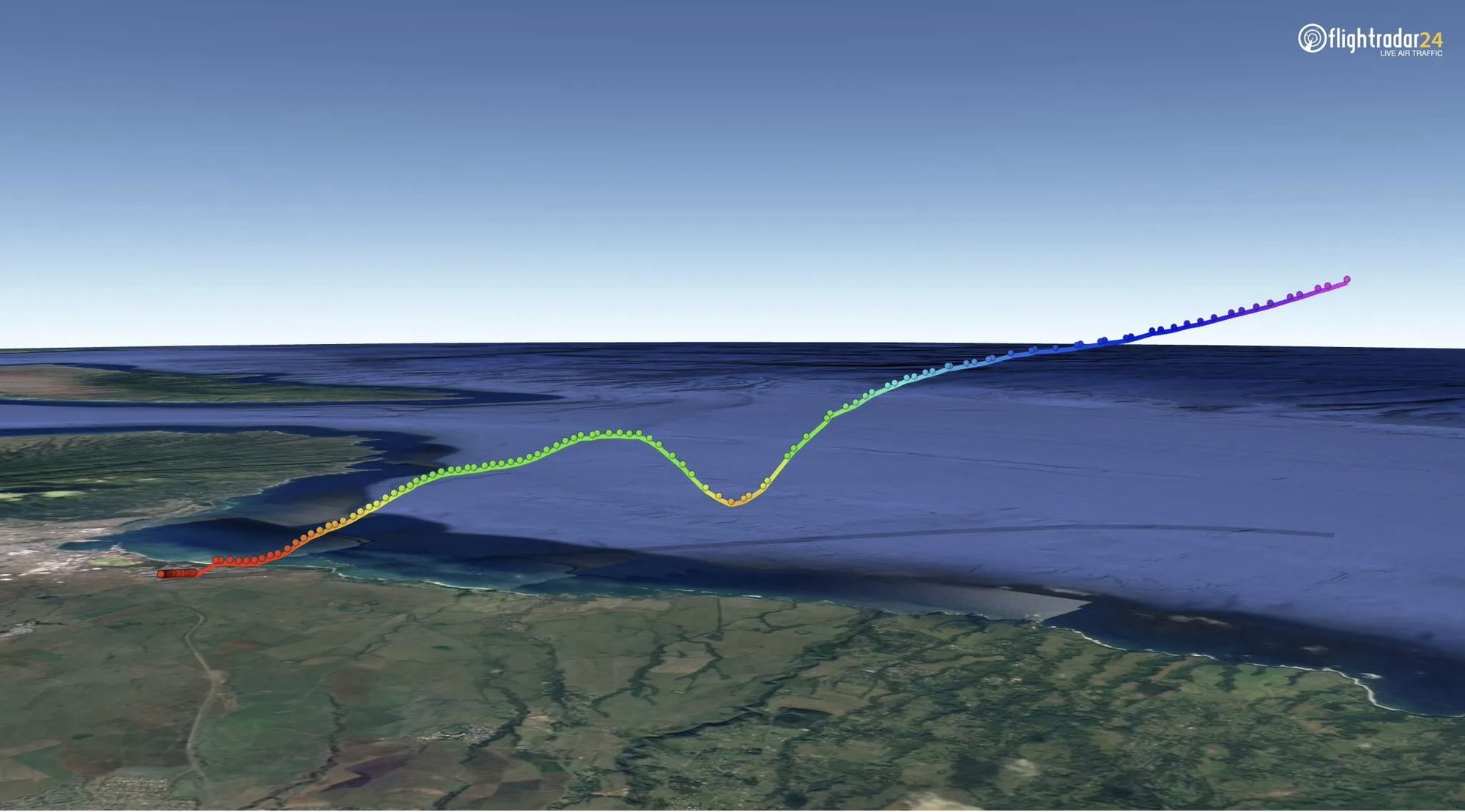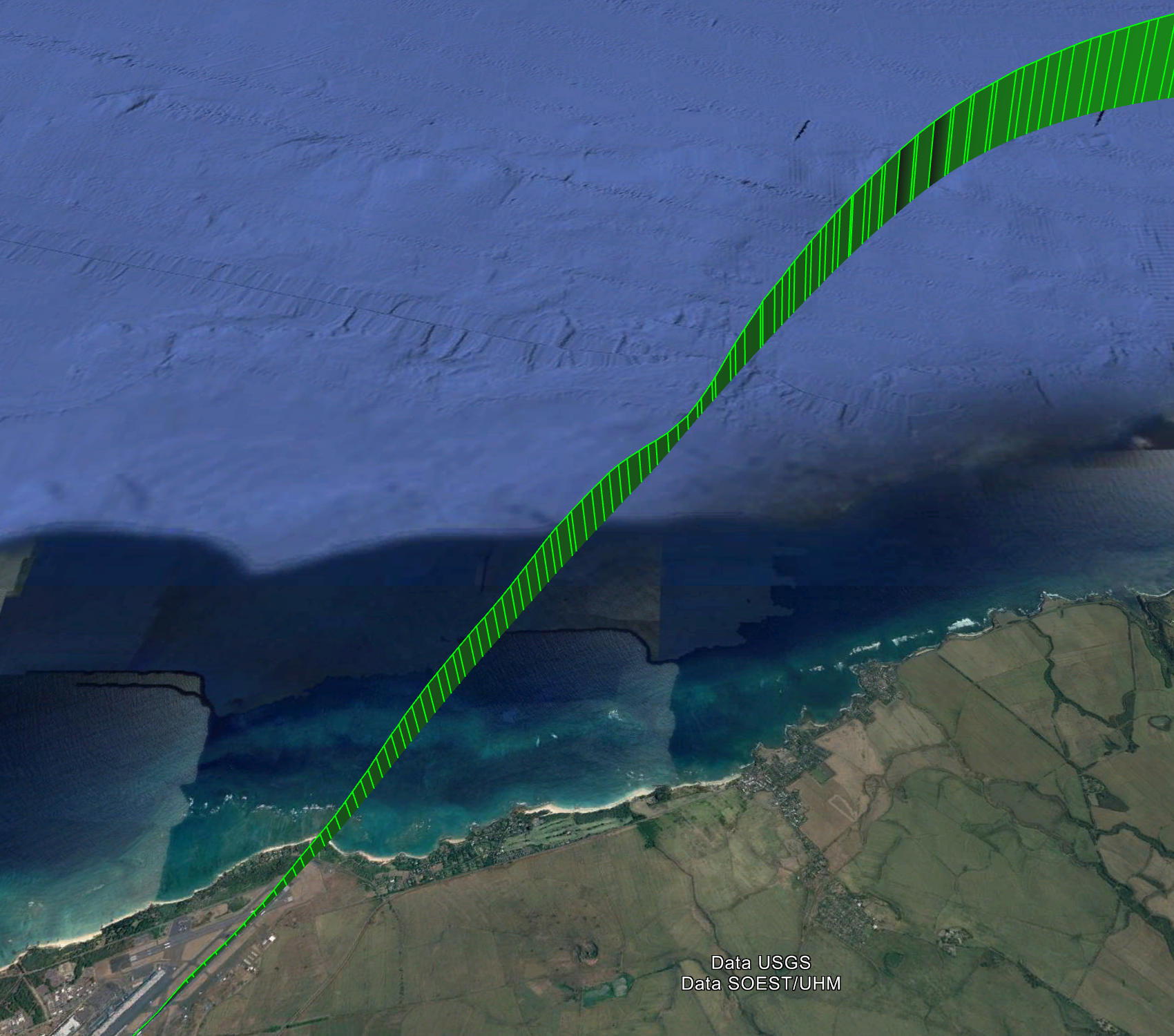United 777 "dives" after takeoff from OGG
Dang! It was a Boeing flown by US major with pilots having 25 Khrs combined so we cannot went our very strong feel... I mean: opin... I wanted to say: facts about how Airbus, everyone except the whi... I mean: first world aviators and youn... actually: inexperienced are just a menace to aviation. We can't rant about the weather either, lest we be mistaken as deluded non-thinking fools believing that global warming is real and not just what global conspiracy of lizard-people wants us to believe.
Provided FR24 data are reliable (which they have proven to be more often than not), that must've been a heckuwa rollercoaster ride. Were there any reports of "Scared passenger: we all thought we're gonna die!" in any of the local rags?
Provided FR24 data are reliable (which they have proven to be more often than not), that must've been a heckuwa rollercoaster ride. Were there any reports of "Scared passenger: we all thought we're gonna die!" in any of the local rags?
From another website,,
A message from a friend:
Gusty takeoff, heavy rain, heavy plane, short runway, and at night. Used flaps 20.
At accel height, CA (PF) called for flaps 5. FO went through the gate and selected flaps 1. When climb rate dissipated, CA looked over to see the lever and unknowingly banked over as well. CA became disoriented and neither pilot noticed the dive until the GPWS warning. 2.7Gs at 775’ AGL to recover.
A message from a friend:
Gusty takeoff, heavy rain, heavy plane, short runway, and at night. Used flaps 20.
At accel height, CA (PF) called for flaps 5. FO went through the gate and selected flaps 1. When climb rate dissipated, CA looked over to see the lever and unknowingly banked over as well. CA became disoriented and neither pilot noticed the dive until the GPWS warning. 2.7Gs at 775’ AGL to recover.
Pilots 'received additional training'.
Ya think? >8000 FPM dive, waited to hear the GPW to recover, within 800' from the water. Finally, advanced technology saves one.
Ya think? >8000 FPM dive, waited to hear the GPW to recover, within 800' from the water. Finally, advanced technology saves one.
Thread Starter
There's no appreciable variation in the track during the event, suggesting that there can't have been much in the way of a bank for any length of time.
The height quoted by FR24 is uncorrected for QNH - the actual minimum height would appear to have been around 150' lower than that.
at 775’ AGL to recover.
Thread Starter
That said, the elapsed time for the upset from 2200 feet, down to 775 feet and back to 2200 was approximately 28 seconds, so unless doubt is being cast on the instantaneous height values or timestamps, that does indeed appear to be what happened.
Join Date: Jul 2013
Location: In a Pineapple Under the Sea
Age: 61
Posts: 152
Likes: 0
Received 0 Likes
on
0 Posts
United 777 "dives" after takeoff from OGG
Haven’t seen much about this. United flight 1722 from OGG to SFO experienced a significant drop in altitude after taking off from Maui on December 18. Heavy rain at that time - pilots recovered about 800 feet over the water - then proceeded to SFO. Must have been quite a ride.
More here:
https://theaircurrent.com/aviation-s...22-close-call/

More here:
https://theaircurrent.com/aviation-s...22-close-call/

I was reading the article and was surprised at how reasonable and informed the writing was. Then I saw it was Jon Ostrower; he knows his stuff and doesn't sensationalize.
2.7Gs in a 777 had to be exciting. Weather was bad -- windshear?
2.7Gs in a 777 had to be exciting. Weather was bad -- windshear?
Why wasn't this reported on Dec 18 and why did the crew continue to SFO? What does the NTSB say?
Join Date: Jan 2019
Location: Up
Posts: 103
Likes: 0
Received 0 Likes
on
0 Posts
For those interested, Juan's comments
This comment was posted below the video.
QUOTE:
jdorenbecher
Former pilot and I was on that flight on that day. Shortly after TO the pilot slightly retarded the engines. I noticed it but it was subtle. Then we started sinking. The aircraft did not nose over into a dive. It felt like we were hit with a downdraft. Many screamed and the crew increased thrust and recovered and climbed up to FL39 and smooth air. I normally don't get too bothered by turbulence but I knew we were very close to the water having only been in the air for slightly more than a minute.
This comment was posted below the video.
QUOTE:
jdorenbecher
Former pilot and I was on that flight on that day. Shortly after TO the pilot slightly retarded the engines. I noticed it but it was subtle. Then we started sinking. The aircraft did not nose over into a dive. It felt like we were hit with a downdraft. Many screamed and the crew increased thrust and recovered and climbed up to FL39 and smooth air. I normally don't get too bothered by turbulence but I knew we were very close to the water having only been in the air for slightly more than a minute.
Join Date: Dec 1998
Location: UK
Posts: 294
Likes: 0
Received 0 Likes
on
0 Posts
Does Maui have non standard AA? Should be clean well before 2200ft. And selecting flap 1 instead of 5 might not even be noticeable - you’re accelerating anyway. In that weather why not use the autopilot?? Also, not unreasonable to continue the flight to destination. What advantage is there of doing a diversion back to bad weather and maybe even having to dump fuel?
For those interested, Juan's comments
https://www.youtube.com/watch?v=1B9mQQnZg_8
This comment was posted below the video.
QUOTE:
jdorenbecher
Former pilot and I was on that flight on that day. Shortly after TO the pilot slightly retarded the engines. I noticed it but it was subtle. Then we started sinking. The aircraft did not nose over into a dive. It felt like we were hit with a downdraft. Many screamed and the crew increased thrust and recovered and climbed up to FL39 and smooth air. I normally don't get too bothered by turbulence but I knew we were very close to the water having only been in the air for slightly more than a minute.
https://www.youtube.com/watch?v=1B9mQQnZg_8
This comment was posted below the video.
QUOTE:
jdorenbecher
Former pilot and I was on that flight on that day. Shortly after TO the pilot slightly retarded the engines. I noticed it but it was subtle. Then we started sinking. The aircraft did not nose over into a dive. It felt like we were hit with a downdraft. Many screamed and the crew increased thrust and recovered and climbed up to FL39 and smooth air. I normally don't get too bothered by turbulence but I knew we were very close to the water having only been in the air for slightly more than a minute.
I note that the Jon Ostrower account states that the aircraft arrived in SFO, did a two and a half hour turnaround and then departed to ORD. I have not read the MM for a triple but I would have thought that a 2.7g positive would have required more than a 2.5 hour inspection.
Reminds me of the cartoon of a ground engineer climbing over a farm fence into a field in which two pilots sit amongst a yard sale of smoking aircraft parts and shouts to them, "Don't put it in the book, it's due out in an hour"
Reminds me of the cartoon of a ground engineer climbing over a farm fence into a field in which two pilots sit amongst a yard sale of smoking aircraft parts and shouts to them, "Don't put it in the book, it's due out in an hour"
Thread Starter
I note that the Jon Ostrower account states that the aircraft arrived in SFO, did a two and a half hour turnaround and then departed to ORD. I have not read the MM for a triple but I would have thought that a 2.7g positive would have required more than a 2.5 hour inspection.
I'm not saying it's wrong, I'd just like to see the maths.
Join Date: Jul 2009
Location: France
Age: 62
Posts: 98
Likes: 0
Received 0 Likes
on
0 Posts
Well, the math for the vertical acceleration is simple: -8600 to +8600 fpm (diff = 94 m/s) in (13 s) squared needs appr. 0.6 g, + earth pull makes 1.6 g vertical ballpark. This is of course only a very rough avg. estimate because vert. speeds are secondary data derived from diff between individual ADSB altitude transmissions, therefore peak acceleration could be significantly more.
Last edited by spornrad; 14th Feb 2023 at 09:24.





